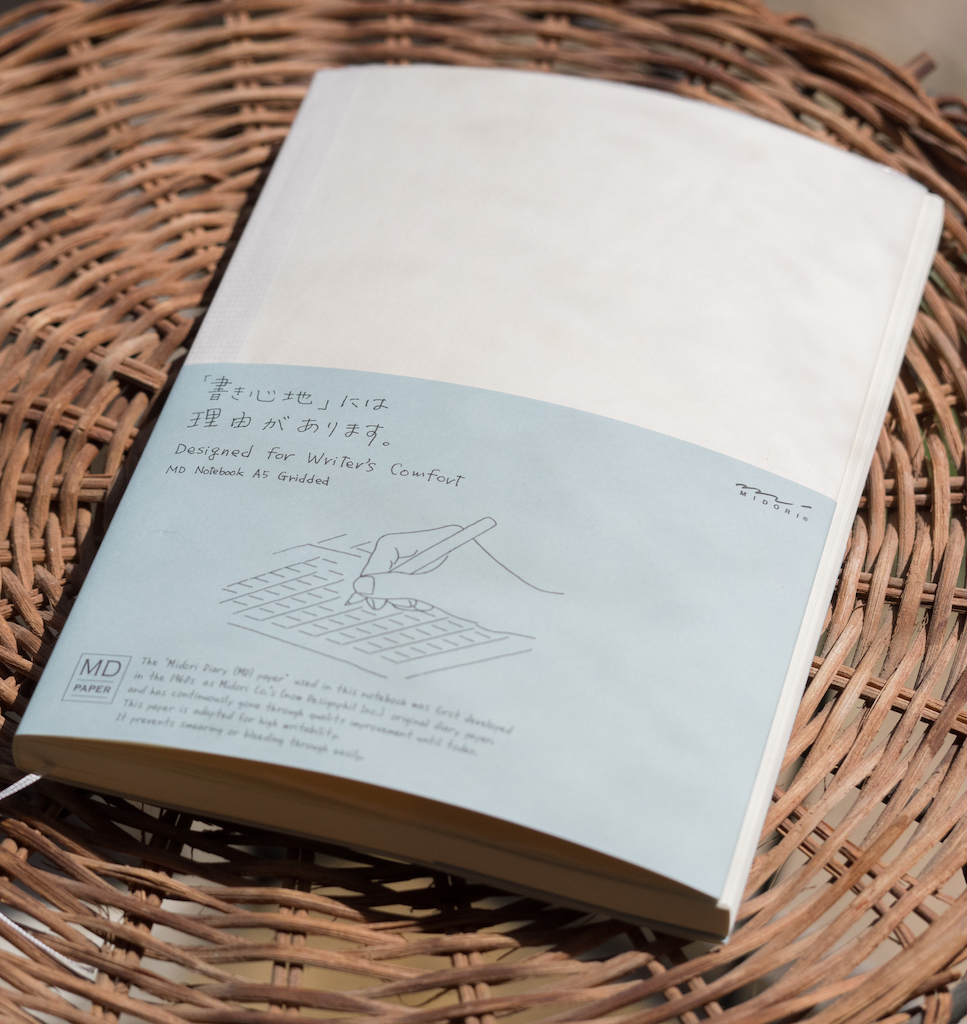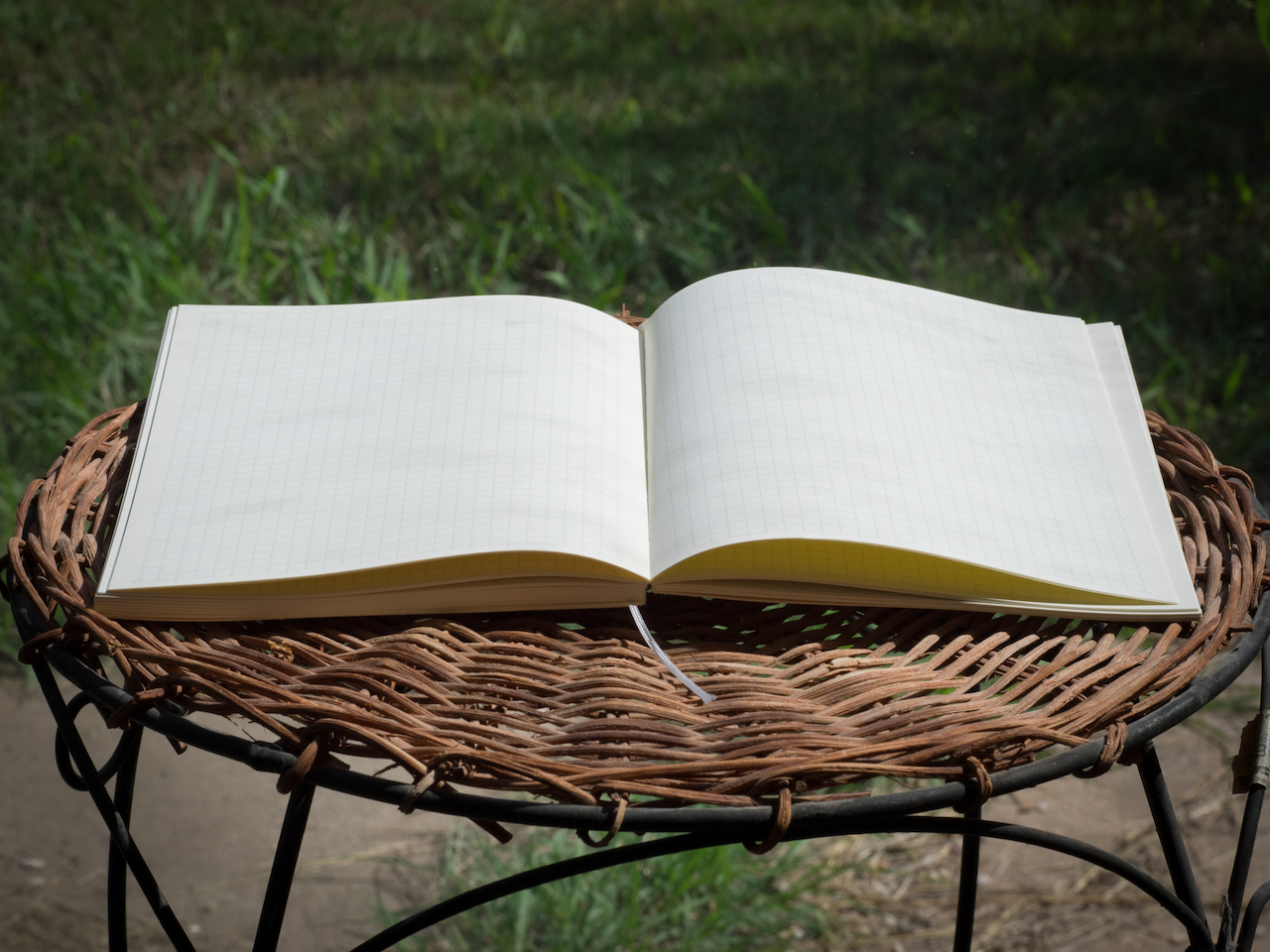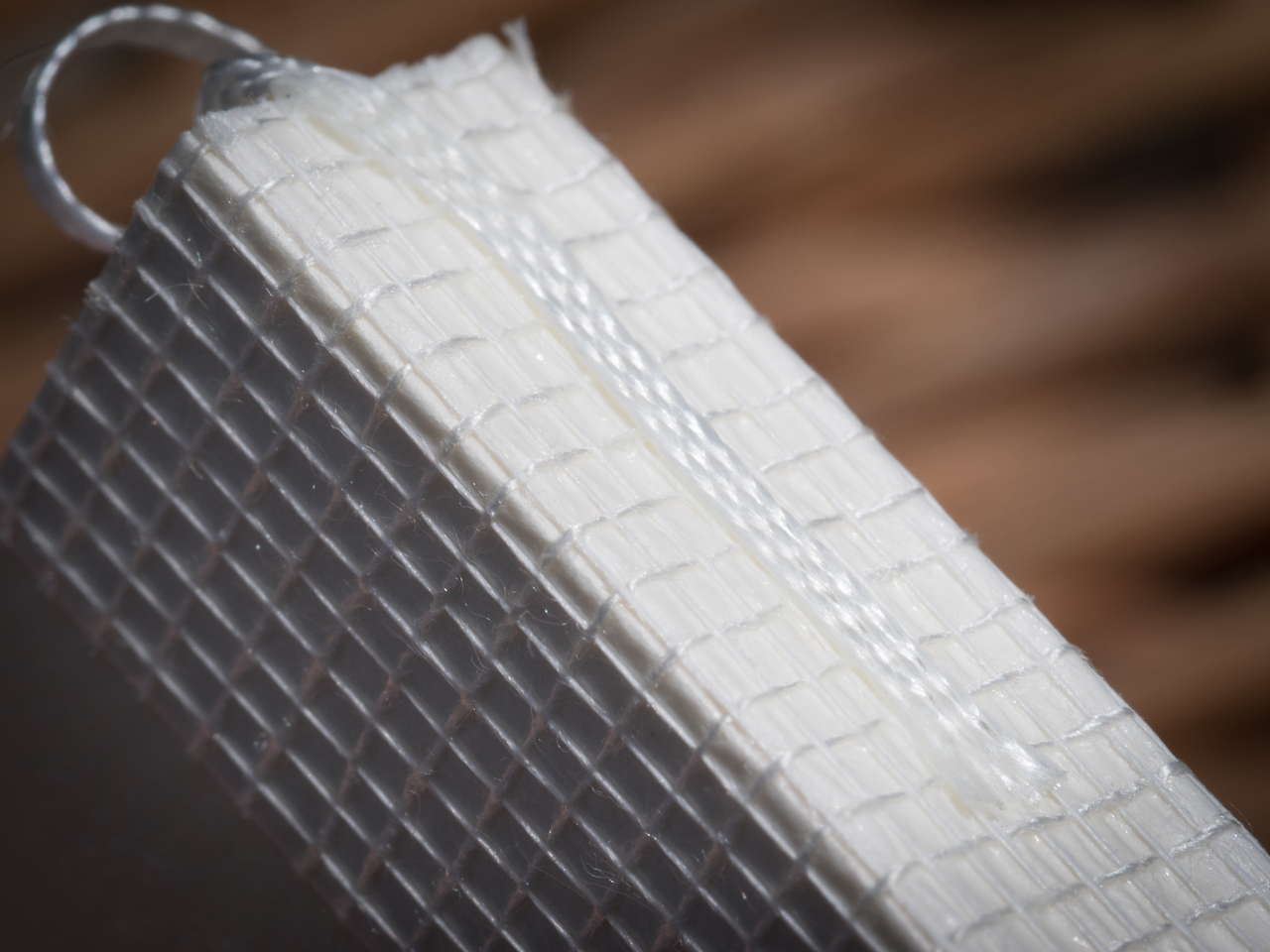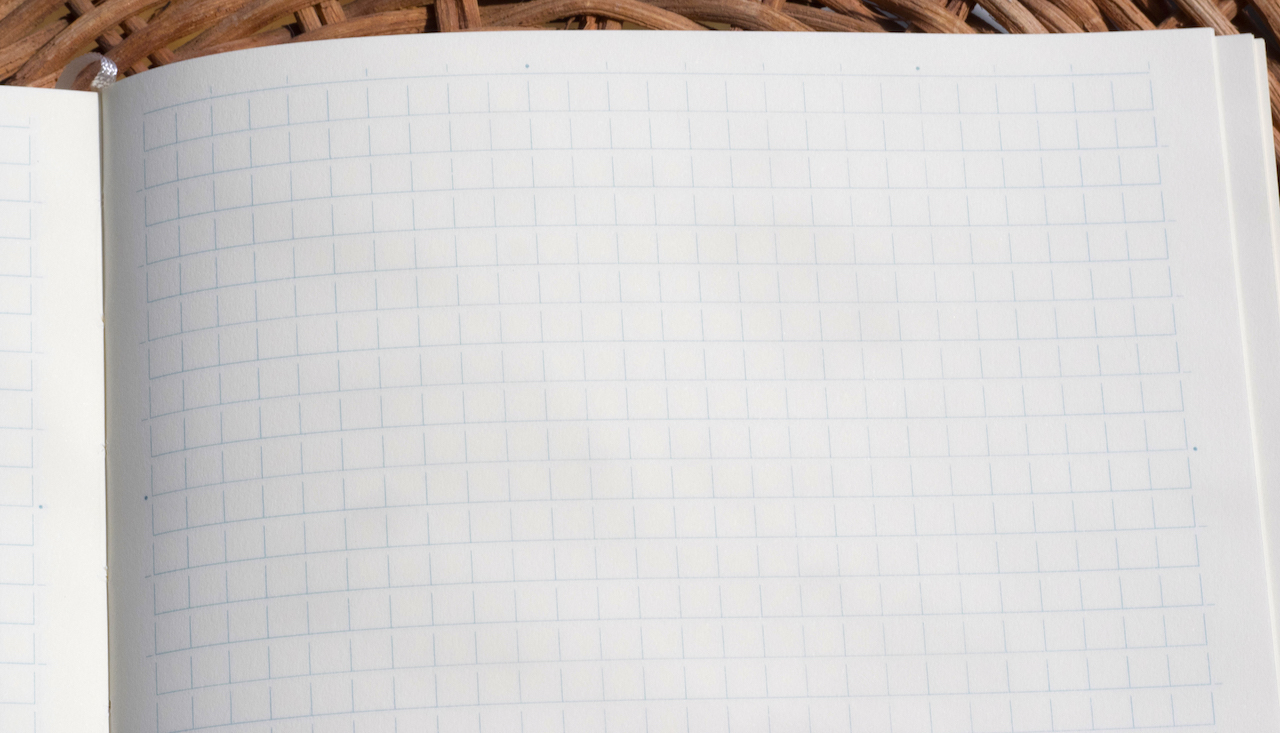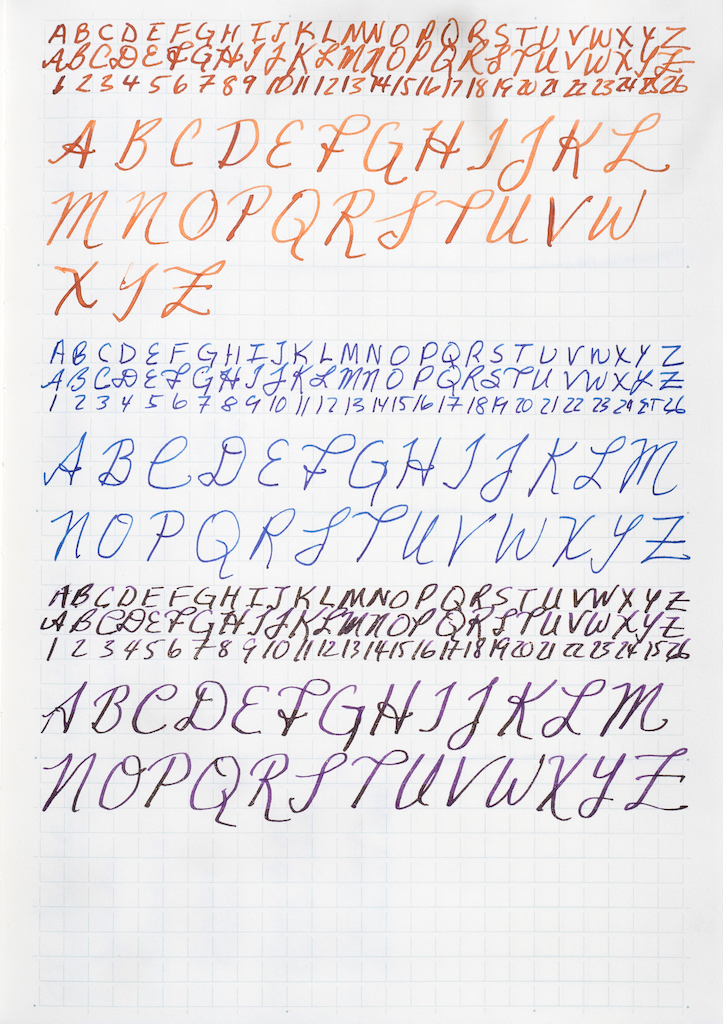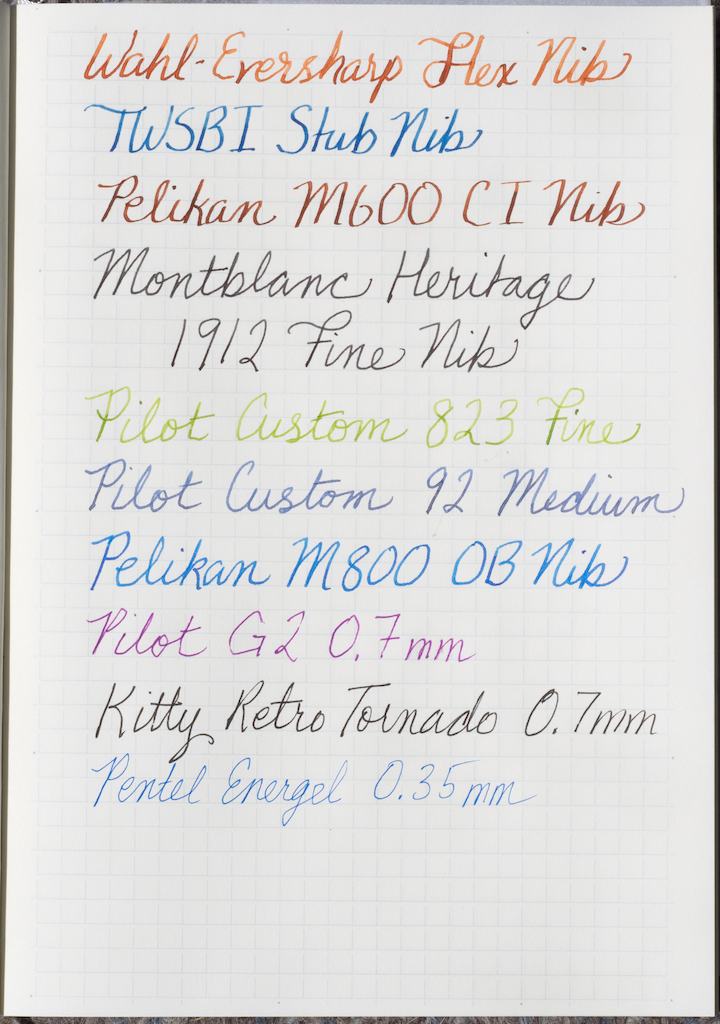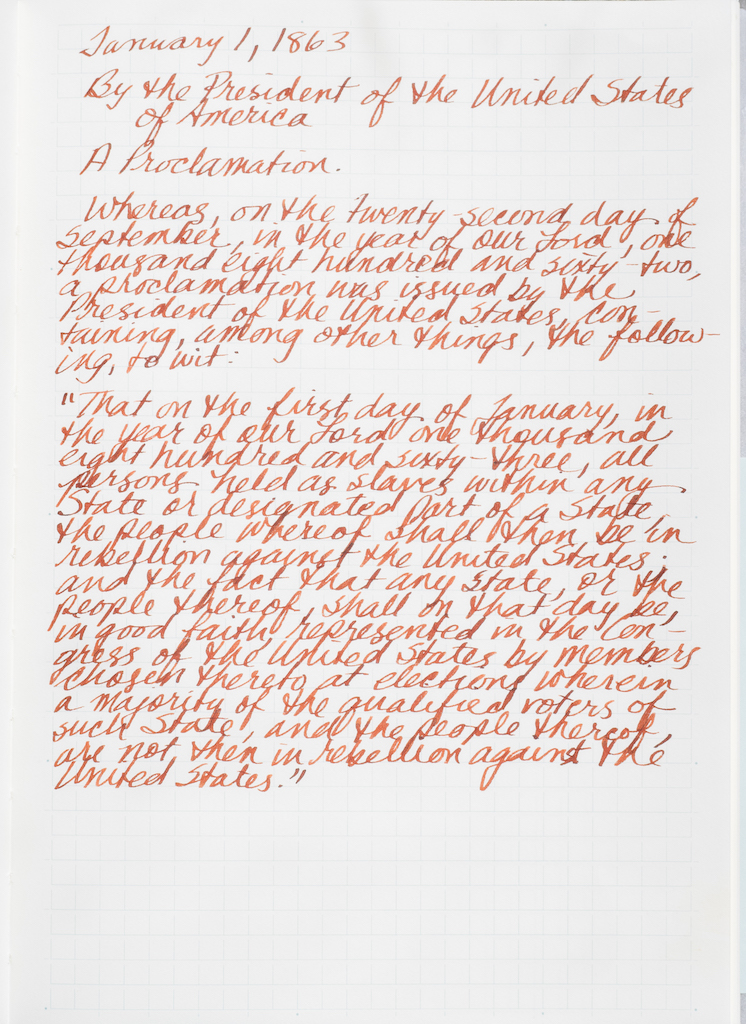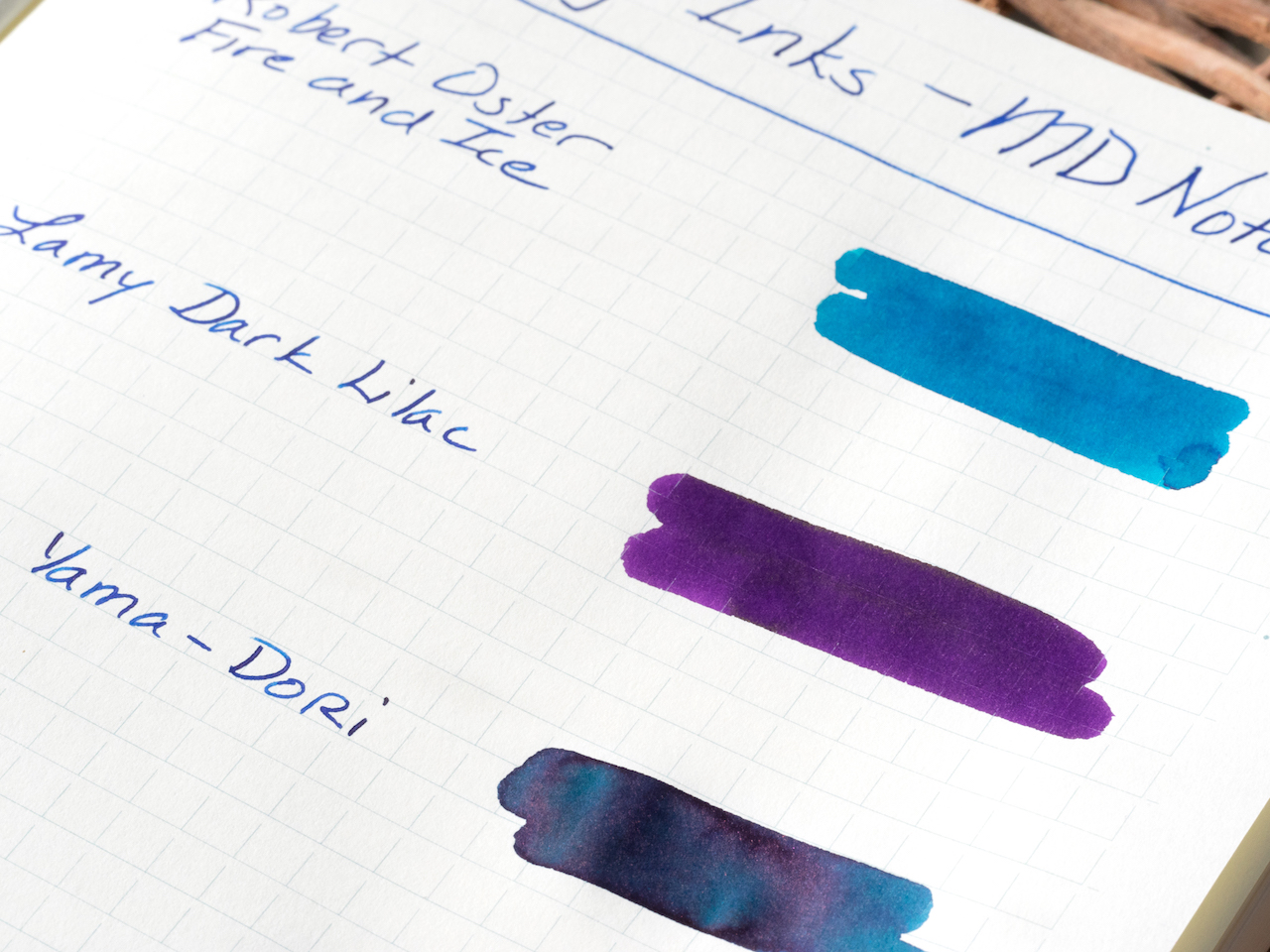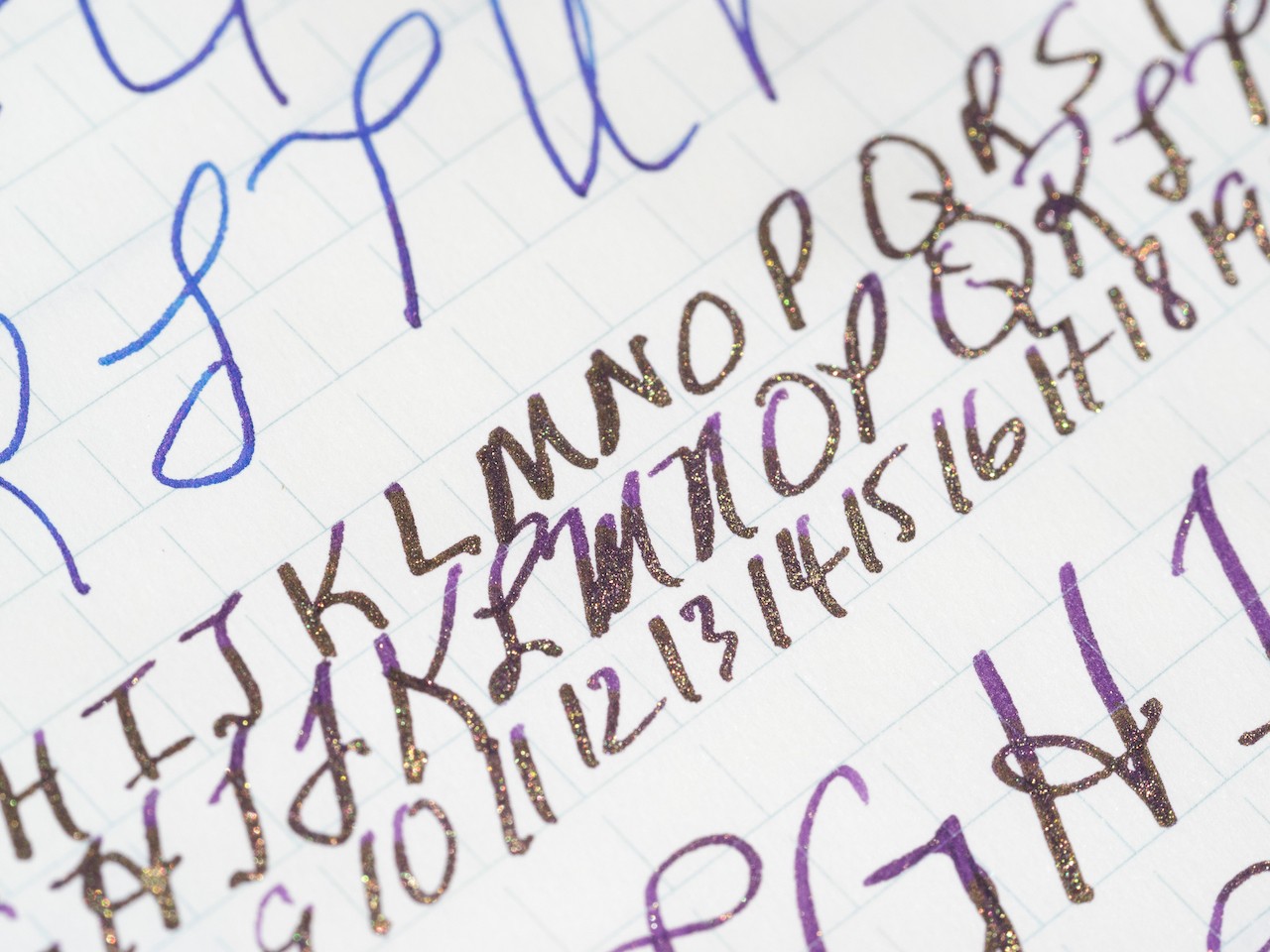(Susan M. Pigott is a fountain pen collector, pen and paperholic, photographer, and professor. You can find more from Susan on her blog Scribalishess.)
The Midori MD Notebook is an A5-sized, 88 page (176 pages front and back) notebook with cream paper. I couldn’t find the actual paper weight on the Midori site, but they describe the paper as
"provid[ing] a fine balance between a slight catch on the paper when writing and a smooth writing feel. With this paper, you can enjoy the sensation of writing."
After writing on this notebook for a couple of weeks, I completely agree with that description.
The MD Notebook is packaged in a clear cellophane package. The notebook is wrapped in slightly opaque paraffin paper that you can remove or leave on for protection. I have a thing about the texture and crinkly sound of paraffin paper, so I’m keeping my notebook wrapped.
The notebook is bound in cardstock (though Midori is careful to say that this is not a cover—it’s more like the end pages you would find in a hardbound book. The notebook pages are bound using the traditional thread-stitched method. This allows the book to open completely flat.
In minimalistic fashion, the binding and stitching can be seen through the cheesecloth tape on the spine. This would normally be hidden underneath a hardbound cover. It really is quite beautiful. You can even see the book ribbon through the tape.
I chose the gridded version of the MD Notebook, but they also come in blank and 7mm lined. The gridded lines are 5mm, and there are tiny dots along the margins marking every 10 squares on the long edge and 10 and 5 squares long the top edge. This allows you to count characters if you like, or use the dots to create even grids.
I tested my MD Notebook in several different ways. I tried it with different pens and inks writing alphabets. It handled all three pens and inks perfectly with no bleed-through. The writing does show through the paper slightly, but I couldn’t get a good photo of it.
Top: Wahl-Eversharp Decoband with Kyo-Iro Moonlight ink, Middle: Pilot Custom 92 with Iroshizuku Shin-Kai ink; Bottom: Conid Minimalistica with Diamine Purple Pazzazz
One of the things I love about grid paper is the fact that you can write on it either in portrait or landscape. So, next I created a to-do chart for my Fall classes. The gridlines make it easy to create columns and checkboxes.
Next, I tested the paper with all of my currently-inked pens, a gel pen, and a rollerball. Again, no complaints. All the inks performed well.
Then I wrote a test page using the Emancipation Proclamation for text. I found the 5mm grid size to be too small for my usual handwriting. That’s probably because I’ve gotten accustomed to 7mm lines in my journal. For people who print or write using fine nibs, the size should be adequate. By the way, if you read the quote carefully (please don’t) you’ll see that I totally muffed it up. My eyes skipped an entire paragraph, so I’d make a horrible scribe.
I also did some ink swabs to see how the paper handled thick, wet ink. Once again, it aced the test. No bleedthrough at all.
The MD Notebook paper is really, really nice. I’m a Tomoe River Paper fan, but I must say, this MD Notebook is giving my Seven Seas Journal a run for the money. Both kinds of paper are fountain-pen friendly. Both papers come in creamy colors. Both papers are bleed-resistant. Both display sheeny inks well.
Hobonichi Cousin Tomoe Left; MD Notebook Right
The main difference between the two is Tomoe River Paper feels much thinner and smoother. MD Paper is thicker, and it has some tooth to it. That’s not to say that the paper is rough or catches your nib. It just provides more feedback.
Diamine Purple Pazzazz ink
You can purchase the Midori MD A5 Notebook Gridded at JetPens for $14.00. They also carry the blank and lined versions. If you want a sleek cover for your MD Notebook, you can get a goatskin cover for $84.00.
Enjoy reading The Pen Addict? Then consider becoming a member to receive additional weekly content, giveaways, and discounts in The Pen Addict shop. Plus, you support me and the site directly, which I am very grateful for.
Membership starts at just $5/month, with a discounted annual option available. To find out more about membership click here and join us!

